7 Ways a Homeowner Can Make Life Tougher for Termites
 13 February 2018
13 February 2018 
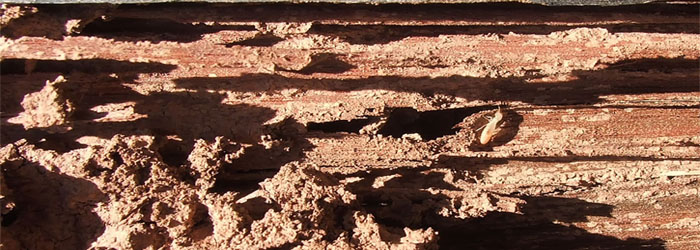
Find and Fight Termites
Arizona is a paradise for termites. That's because they love warmer climates and most of our homes are framed in wood – their favorite food.
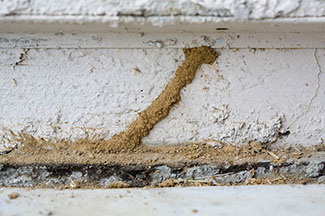 There are more than a dozen types of termites living in our state, but the most destructive fall into two categories, according to the University of Arizona: dry-wood and subterranean. Sometimes termite companies encounter dry-wood termites in historic areas, says Mike Saldivar, general manager of Action Termite in Phoenix, but it's mainly the subterranean species that homeowners are most likely to find in their houses.
There are more than a dozen types of termites living in our state, but the most destructive fall into two categories, according to the University of Arizona: dry-wood and subterranean. Sometimes termite companies encounter dry-wood termites in historic areas, says Mike Saldivar, general manager of Action Termite in Phoenix, but it's mainly the subterranean species that homeowners are most likely to find in their houses.
Don't fret, there are ways to fight back. Here are seven situations in houses and yards that would encourage those destructive pests as well as what to do about these problems:
1 | Moisture that surrounds the foundation of your home
Termites flourish in moist ground because it's easier to tunnel through damp soil to reach wooden structures in a house. That moisture could be there because your yard slopes down toward the house. Plumbing leaks could also be responsible. You need to fix those leaks and see if it's possible to divert water away from the house.
2 | Wooden structures directly touching the soil
Things like fence and patio posts or trellises. A wooden fence or trellis should not be attached to the house itself. It's hard to replace patio posts, of course, but if and when you do, make sure wooden posts have concrete footings.
3 | Excessive cellulose debris in your yard or garage
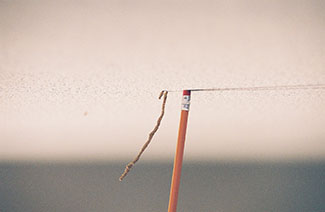
"Cellulose" in this case refers mainly to wood debris. So, remove piles of firewood, construction lumber and mulch – particularly material touching the house's foundations. Remove any cardboard boxes you are using for storage.
4 | Shrubs planted too close to the house
Putting in large bushes close to the walls of your home may look attractive, but it means that when you irrigate, moisture will sit next to your walls and could attract termites. Large shrubs can also prevent you from inspecting your walls for termite tubes or damage.
5 | Stucco or wood siding on a house that touches the soil
If your house is built on a slope and the ground sits against stucco or siding, it allows termites to have access to the structure without detection.
6 | Additions built onto a home without termite protection for the new structure
If you remodel, be sure that the contractor provides a barrier of termiticide for any additions just as was done when your home was first built. The protection won't last forever, but it will help for a while.
7 | Dead and dying trees or old tree stumps left to rot in your yard
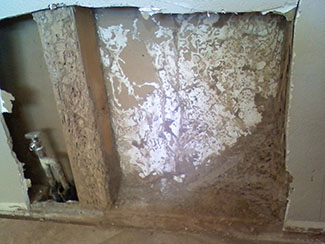
These can attract termites. So, as stated above, get the wood out.
Even if you find termites or damage they are doing, you can, of course, fight back and repair the problem areas. So twice a year, grab a flashlight and tour your home inside and out for evidence of the pests before they get out of control.
- Look for mud tubes crawling up the concrete stem wall of your home, the small section at the bottom of walls where the siding or stucco ends.
- On your exterior walls, inspect painted wood on siding, windows and doors. You may see small holes or sawdust debris. Tap wooden areas with a screwdriver handle to see if there is a hollow sound. If wood often gets wet due to drainage problems, it could lead to termite problems.
- Look at the top of your interior walls – including inside closets – where you might spot more termite tubes or bubbles in the paint.
An inspection like that can help protect your home. But as I always say there are two types of homes in Arizona: those that have termites and those that will get termites.
How to Fight Termites
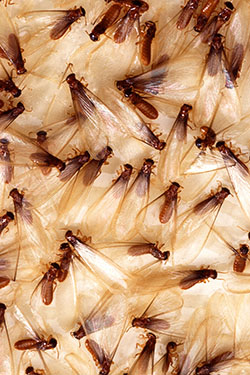
Debate continues over the various treatments in the marketplace. Most pesticide companies treat termites with chemicals put into the soil around a house. Holes are also drilled through concrete slabs and down into the ground; then pesticides are inserted.
Sometimes baits are planted in soil. Some homeowners prefer to try natural solutions to fight termites with substances including borax, vinegar, salt, cayenne pepper, neem oil and diatomaceous earth. However, those remedies seem like a big gamble and take a lot of work.
For many years, two termiticides have dominated the marketplace:
Premise 75 WP with the active ingredient imidacloprid. This substance kills termites more quickly but its results are not as long-lasting.
Termidor SC with active ingredient fipronil. It kills termites slowly but stays in the soil longer.
Mike Saldivar of Action Termite says his company uses Fuse, a new product that contains a combination of fipronil and imidacloprid.
###
Photo Credits:
RELATED CONTENT:
- Blog: Ten Facts You Need To Know About Water Damage
- Blog: Five Must-Do Fixes In Your Aging House
- Blog: "Termites: A Metaphor for Life" by Renaissance Dad
- DIY FAQ: Harboring Pests
- Podcast: How to Fight Back Against Bugs That Scare Us The Most
Print this page
recent post
- Duck, Duck, Duct! How Often Should Ductwork Be Cleaned?
- Vinyl vs. Fiberglass Windows: Which Is The Better Choice Of Replacement Window?
- We May Be The Grand Canyon State, But The Rocky Mountains Are Important For Arizona
- Welcome to Arizona! Things A Newbie to Arizona Should Know
- The Pros & Cons of Buying A Flipped House
- Getting In On The Ground Floor
- Why It’s More Critical Than Ever To Get Your AC Serviced Before Summer
- The Reality of Remodeling
- What To Look For When Comparing Your Roofing Quotes
- What To Expect When Buying New Windows & Doors
